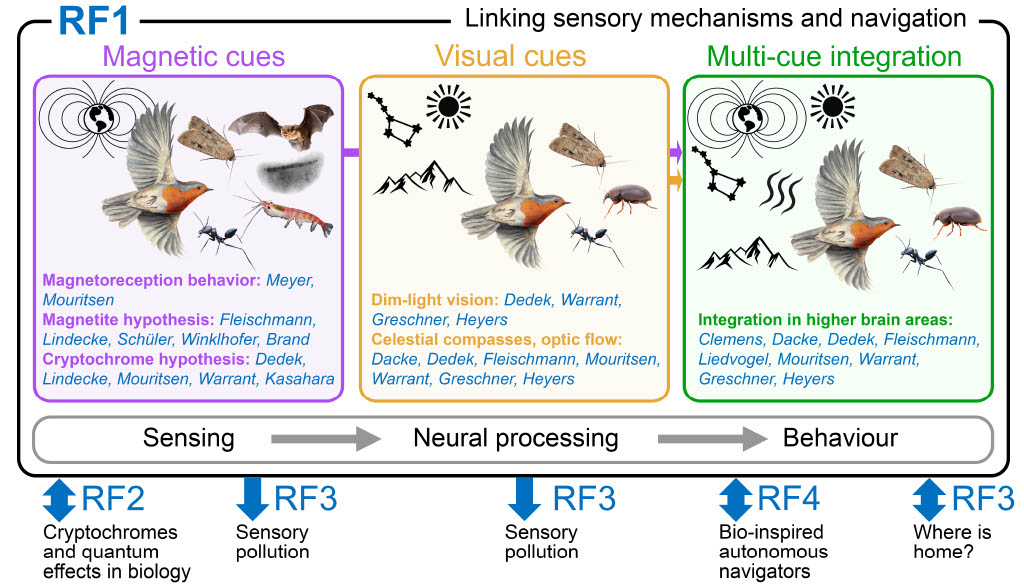To find their way over long distances, animals use a variety of sensory cues. Which cues animals use varies over time and distance towards the goal. In RF1, we aim to understand how animals detect, process and integrate sensory cues for navigation with a combination of various methods. In particular, we will focus on magnetic and visual cues. It has been shown that some animals can use the magnetic field to orient but how animals can sense and process magnetic cues is still one of the major unresolved questions in biology. One visual cue, animals can use for navigation are the stars. We will investigate the neural basis of the star compass in migratory birds and insects. How magnetic and visual information together with all other navigation-relevant sensory information can be finally integrated into the brain, will be another major question of RF1.
The fundamental understanding of the sensory systems underlying navigation will be important for many everyday devices and applications. For example, the knowledge of the principles of insect and vertebrate vision could be used for protecting them in the wild.
Involved fields of expertise: Behavioural biology, behavioural genomics, biochemistry, biophysics, computational neuroscience, electrophysiology, entomology, microbiology, modelling, molecular biology, neuroanatomy, neuroethology, neurophysiology, sensory biology and zoology.
Mainly involved PIs and Cooperation partners: Karin Dedek, Martin Greschner, Pauline Fleischmann, Dominik Heyers, Takaoki Kasahara, Dirk Schüler, Marie Dacke, Eric Warrant, Michael Winklhofer, Henrik Mouritsen
Designated speaker of RF1: Karin Dedek

